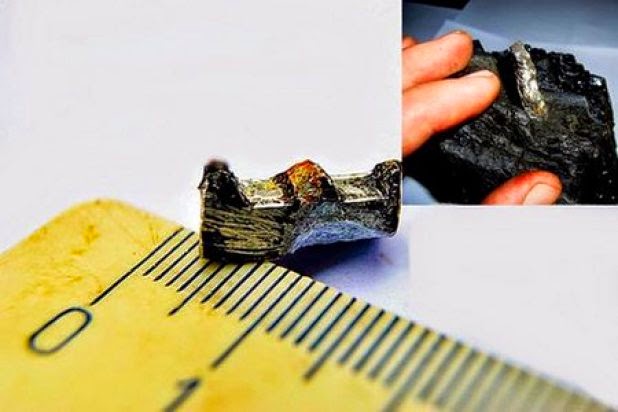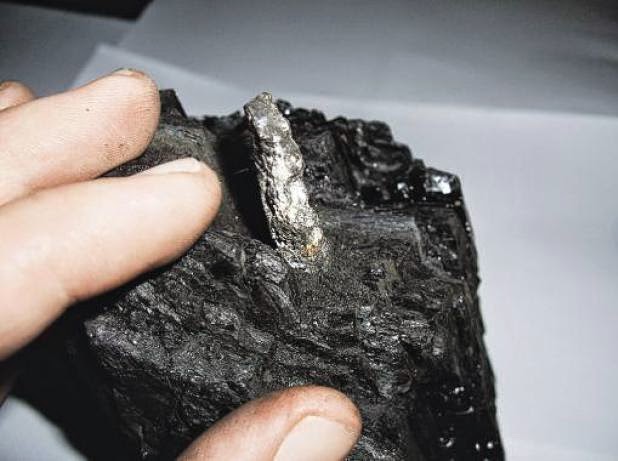300-Million-Year-Old Piece Of Machinery Found In Russia

300-Million-Year-Old Piece Of Machinery Found In Russia
Researchers in Russia have come across other artefacts that they have dated back millions of years. There has been a lot of chatter regarding this discovery as national media have reported that a curious artefact has been discovered in Vladivostok, Russia.
We are talking about a 300-million-year-old piece that could have belonged, in the distant past, to a complex aluminium machine.
Experts who have had the opportunity to analyze the artefact have concluded that the piece resembles a gear and is not, in any case, the result of natural forces.

Where the 300-million-year-old gear gets interesting (If the age itself isn’t incredible) is in its chemical composition. According to tests, the object is composed of extremely pure aluminium ranging from 96 to 98 per cent of aluminium and has an addition of 2% to 4% of magnesium.
This composition is even more surprising according to scholars, as highly pure aluminium is something very hard to find, most alloys contain manganese, silicon, copper, titanium, or Zirconium Beryllium but in a percentage of about 10%.
This actually means that the object we are discussing has a chemical composition that is not common in our time and even less in the past, and is something extremely hard to be found by itself in nature.
Scientists state that pure aluminium is increasingly prone to oxidation which adds to the creation of a special layer that actually protects it from corrosion, this makes it possible to endure extremely high pressures and heat and other severe natural conditions making it a very unique item.

The discovery points toward the resemblance of these 300 million-year-old items with similarly shaped toothed metal bars, artificially created today, but it also looks similar to parts that are often used in microscopes, and various technical and electronic devices, according to writer Natalia Ostrowski.
According to the website voiceofrussia.com:
“Another question that interests Russian scientists is whether the aluminium alloy is of Earthly origin. It is known from the study of meteorites that there exists extra-terrestrial aluminium-26 which subsequently breaks down to magnesium-26.
“The presence of 2 per cent of magnesium in the alloy might well point to the alien origin of the aluminium detail. Nonetheless, further testing is needed to confirm this hypothesis.”
It was also found that the object contains from 28% to 75% of carbon; This helped to reaffirm the age of the object placing it 300 million years ago.
Does the finding of this artefact have something to do with the numerous artefacts found elsewhere on the planet?
And the greater question ufologists are asking is if this “device” provide any kind of evidence that humanity is far older than we have been thought by our history books? Is there a possibility that man existed in times when we thought it wasn’t possible? Ancient man showing a complex use of technology and mechanics?
These are just some of the several questions asked by ancient alien theorists and ufologists who have claimed for years that the history books and science has got a major part of our past wrong.
Scientists state that it is hard to believe that such an artefact could take the regular shape of a tooth-wheel composed out of six identical ‘teeth’ naturally, making the natural formation theory improbable.

It is not that improbable to believe that the Earth was inhabited millions of years before we came into existence. There is a possibility that advanced civilizations populated the earth in a very remote past, as there are many pieces of evidence pointing towards this assumption.
But the most important question is who inhabited the earth at that time? Advanced human beings? Extraterrestrials races? Time travellers?
Today, finding a strange artefact embedded in coal is a relatively common occurrence.
The first of such discoveries was made way back, in 1851, when workers in one of the mines in Massachusetts extracted a zinc-silver alloy embedded in a kind of vase inside a block of undeveloped coal, dating from the Cambrian era, about 500 million years ago.
Sixty-one years later, American scientists in Oklahoma discovered an iron pot that was pressed into a lump of coal which was dated back 312 million years ago. Later, in 1974, part of an aluminium structure of unknown origin was found in a sandstone quarry in Romania.
So as we can see there have been numerous artefacts discovered in the distant past that is not being talked about in mainstream media. People are becoming less interested in our past and amazing discoveries that have no place next to articles that talk about fashion, technology and cars.
This 300 million-year-old artefact is something that is worth looking into, and there are numerous possibilities about what the object might be, and who or what created it.
Further tests need to be performed to understand and explain the origin of the 300 million-year-old artefact.